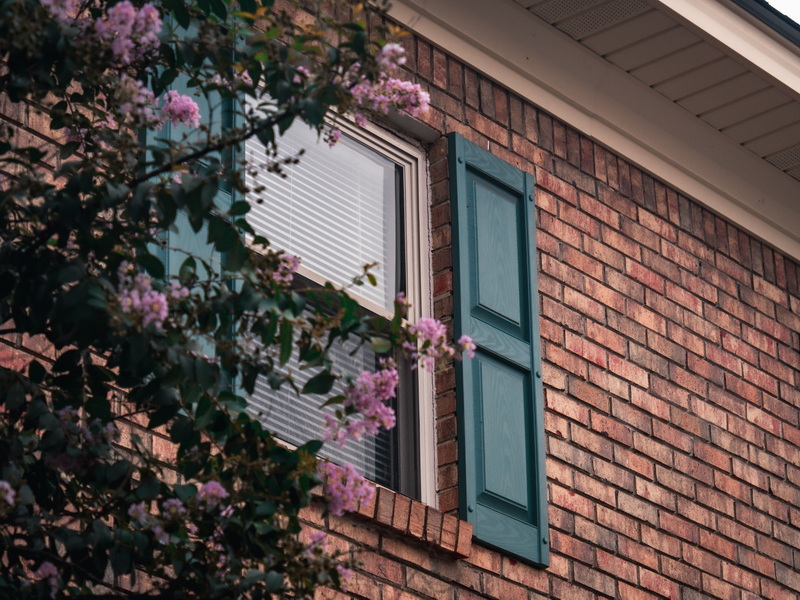English 




Views: 222 Author: Astin Publish Time: 2025-02-20 Origin: Site



Content Menu
● The Science Behind Condensation
● Factors Contributing to Window Sweating
>> Thermal Conductivity of Aluminum
>> Air Leaks
● Problems Caused by Condensation
>> Mold Growth
>> Water Damage
>> Decreased Energy Efficiency
● Preventing Condensation on Aluminum Windows
>> Control Indoor Humidity Levels
>> Maintain Consistent Indoor Temperatures
>> Consider Interior Storm Windows
● FAQ
>> 1. What causes aluminum windows to sweat?
>> 2. How can I reduce humidity in my home?
>> 3. Is condensation on aluminum windows a sign of poor insulation?
>> 4. Can I prevent mold growth from window sweating?
>> 5. Should I replace my aluminum windows if they sweat frequently?
Aluminum windows are a popular choice for many homeowners due to their durability, affordability, and sleek aesthetic appeal. However, one common issue that arises with aluminum windows is condensation, often referred to as "window sweating." This phenomenon can be frustrating for homeowners, as it can lead to various problems if not addressed properly. Understanding why condensation occurs on aluminum windows is essential for homeowners to maintain their windows effectively, prevent potential damage, and ensure a comfortable living environment.

Condensation is a natural process that occurs when warm, moist air comes into contact with a cooler surface. The air's ability to hold moisture is directly related to its temperature; warmer air can hold more moisture than cooler air. When warm, moist air meets a cold surface, the air cools down, and its capacity to hold moisture decreases. As a result, the excess water vapor in the air condenses into liquid droplets on the cooler surface.
In the case of aluminum windows, the frames and glass panes can become cold due to lower outdoor temperatures, particularly during winter months. Aluminum is a highly conductive material, meaning it readily transfers heat. When the warm, moist air from inside the home comes into contact with the cold surface of the aluminum frame or glass, the air cools down rapidly. This rapid cooling causes the water vapor in the air to condense into liquid droplets on the window surface, resulting in what we commonly call "window sweating."
The temperature at which condensation forms is known as the dew point. The dew point is the temperature to which air must be cooled to become saturated with water vapor. Factors such as indoor humidity levels, external temperatures, and the surface temperature of the window all play a significant role in determining when and where condensation will occur. High humidity levels inside the home, often caused by activities like cooking, showering, or drying clothes, can significantly exacerbate this issue. Conversely, dry air will have a lower dew point, meaning the surface needs to be much colder for condensation to form.
Several factors contribute to the occurrence of condensation on aluminum windows. Understanding these factors is crucial for implementing effective prevention strategies:
Excessive moisture in the air is the primary driver of condensation. When there is a high concentration of water vapor in the air, it's more likely to condense on cold surfaces. Common activities that generate humidity inside a home include cooking (especially boiling water or steaming food), showering or bathing, washing dishes, drying clothes indoors, and even the presence of indoor plants. Homes located in humid climates are also more prone to condensation issues.
Rapid and significant changes in indoor temperature can lead to increased condensation. For instance, if a home is heated during winter months but has poorly insulated windows, the warm air can quickly cool upon contact with the cold glass or frame. This sudden temperature drop forces the air to release its moisture, resulting in condensation. Similarly, sudden drops in outdoor temperature can cause the window surfaces to cool rapidly, leading to condensation even if the indoor humidity levels are relatively normal.
Inadequate ventilation can trap humid air inside a home, preventing it from escaping and leading to higher humidity levels. Stagnant air allows moisture to accumulate, increasing the likelihood of condensation. Proper airflow is crucial in reducing moisture buildup. This can be achieved through natural ventilation (opening windows and doors), mechanical ventilation (using exhaust fans and ventilation systems), or a combination of both.
As mentioned earlier, aluminum is a metal that conducts heat efficiently. While this property makes it a suitable material for certain applications, it also means that it can quickly transfer cold temperatures from outside into the interior space. When warm indoor air hits these cold surfaces, condensation is highly likely to form. This is especially true for aluminum windows that lack thermal breaks, which are designed to reduce heat transfer.
Older homes often have single-pane aluminum windows, which offer very little insulation. Single-pane windows are essentially a direct conduit for heat transfer, allowing the cold outdoor temperatures to easily cool the interior surface of the glass. This makes them highly susceptible to condensation, especially during cold weather.
Gaps and cracks around window frames can allow cold air to infiltrate the home, cooling the window surfaces and contributing to condensation. These air leaks can also introduce outdoor humidity into the home, further exacerbating the problem.
While condensation itself is not inherently problematic, excessive moisture buildup can lead to several issues that can negatively impact your home and health:
Prolonged exposure to moisture creates an ideal environment for mold growth around window frames, sills, and walls. Mold not only damages the aesthetics of your home but can also pose significant health risks, particularly for individuals with allergies, asthma, or other respiratory conditions. Mold spores can trigger allergic reactions, respiratory irritation, and other health problems.
Continuous and excessive condensation may lead to water pooling around window frames, causing damage to walls, floors, and surrounding structures over time. This water damage can manifest as peeling paint, warped wood, stained surfaces, and even structural decay. If left unaddressed, water damage can lead to costly repairs and compromise the integrity of your home.
When condensation occurs frequently, it may indicate that your windows are not adequately insulated. Poorly insulated windows allow heat to escape during the winter and enter during the summer, forcing your heating and cooling systems to work harder to maintain comfortable indoor temperatures. This increased energy consumption translates to higher energy bills and a reduced energy efficiency for your home.
Persistent moisture can also damage the window components themselves, such as the frames, sashes, and hardware. Wooden frames can rot, metal frames can corrode, and moving parts can become stiff or inoperable. This damage can shorten the lifespan of your windows and necessitate costly repairs or replacements.

To mitigate condensation issues on aluminum windows, homeowners can take several proactive steps to control humidity levels, improve ventilation, and enhance insulation:
Ensuring proper airflow within your home is crucial. This can be achieved by opening windows regularly (even for a short period each day), using exhaust fans in high-humidity areas like kitchens and bathrooms, and ensuring that your home's ventilation system is functioning properly. Consider installing whole-house ventilation systems for more comprehensive airflow management.
Using dehumidifiers can help maintain optimal humidity levels indoors. Aim to keep indoor humidity between 30% and 50%. Monitor humidity levels with a hygrometer and adjust dehumidifier settings accordingly. Avoid over-humidifying your home, especially during winter months.
Keeping your home's temperature consistent helps reduce temperature fluctuations that contribute to condensation formation. Avoid drastic temperature changes, especially when outdoor temperatures are cold. Consider using a programmable thermostat to maintain consistent temperatures throughout the day and night.
Upgrading to double or triple-glazed windows provides better insulation than single-pane aluminum frames. Double and triple-glazed windows have multiple panes of glass with an insulating layer of gas (such as argon or krypton) between them, which significantly reduces heat transfer. Additionally, using thermal breaks in aluminum frames can significantly reduce heat transfer. Thermal breaks are non-conductive materials that are inserted into the aluminum frame to prevent heat from flowing through the metal.
Regularly inspect window frames for any gaps or cracks where warm air may escape or cold air may enter. Sealing these areas with appropriate materials, such as caulk or weather stripping, can help maintain a consistent temperature around the window and prevent air leaks.
Applying window films can help improve the insulation of your windows and reduce condensation. There are various types of window films available, including those that reflect heat and those that provide additional insulation.
Interior storm windows can be installed inside your existing windows to create an extra layer of insulation and reduce condensation. They are typically made of clear acrylic or glass and are relatively easy to install and remove.
If condensation does occur, wipe it down regularly with a cloth to prevent moisture buildup and potential mold growth. Pay particular attention to window sills and frames.
Understanding why aluminum windows sweat is essential for homeowners looking to maintain their property effectively and prevent potential damage. By recognizing the causes of condensation and implementing preventive measures, it is possible to minimize moisture buildup and its associated problems. Regular maintenance, attention to indoor humidity levels, and proper insulation will ensure that aluminum windows remain functional, visually appealing, and contribute to a comfortable living environment for years to come. Addressing condensation issues promptly can prevent costly repairs and protect the health and well-being of your family.

Condensation occurs when warm, moist air contacts cold surfaces like aluminum frames or glass panes due to temperature differences and high indoor humidity levels.
You can reduce humidity by using dehumidifiers, ensuring proper ventilation through open windows or exhaust fans, and controlling activities that generate excess moisture.
Yes, frequent condensation may indicate inadequate insulation or thermal breaks in your aluminum windows, allowing heat transfer between indoors and outdoors.
Yes, by controlling humidity levels and ensuring proper ventilation around your windows, you can significantly reduce the risk of mold growth associated with condensation.
If condensation becomes a persistent issue leading to water damage or mold growth, it may be worth considering replacing them with better-insulated options like double or triple-glazed windows.
[1] https://www.tvwindows.com/blog/tips-to-prevent-condensation-on-aluminium-windows
[2] https://www.klosen.co.uk/blog/truth-about-condensation-aluminium-windows-doors/
[3] https://gist.github.com/allenfrostline/c6a18277370311e74899424aabb82297
[4] https://brennancorp.com/blog/problems-caused-by-condensation-on-aluminum-windows/
[5] https://blog.csdn.net/weixin_40289064/article/details/79669930
[6] https://www.aikondistribution.com/blog/how-to-prevent-condensation-on-aluminium-window-frames-113
[7] https://blog.csdn.net/qq_34917728/article/details/125122327
[8] https://brennancorp.com/blog/how-to-prevent-condensation-on-aluminum-window-frames/
[9] https://blog.csdn.net/qq_32146369/article/details/138360103
[10] https://www.supplyonlydoors.com/help-and-advice/how-to-prevent-condensation-on-aluminium-window-frames/
Top Aluminum Furnitures Manufacturers and Suppliers in Czech Republic
Top Aluminum Furnitures Manufacturers and Suppliers in Poland
Top Aluminum Furnitures Manufacturers and Suppliers in Belgium
Top Aluminum Furnitures Manufacturers and Suppliers in Finland
Top Aluminum Furnitures Manufacturers and Suppliers in Denmark
Top Aluminum Furnitures Manufacturers and Suppliers in Greece
Top Aluminum Furnitures Manufacturers and Suppliers in Portugal
Top Aluminum Furnitures Manufacturers and Suppliers in Austria
Top Aluminum Furnitures Manufacturers and Suppliers in Norway
Top Aluminum Furnitures Manufacturers and Suppliers in Sweden
